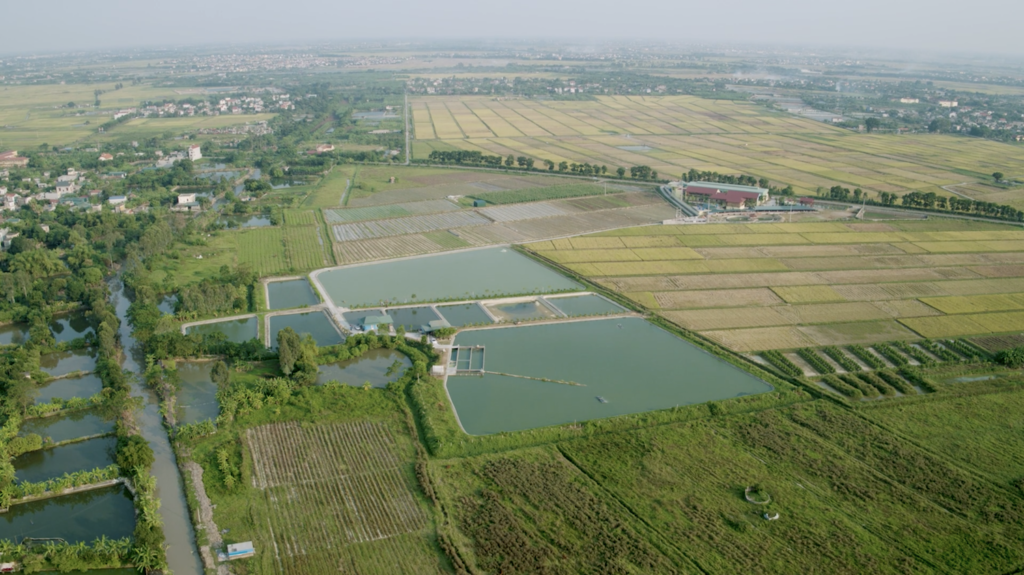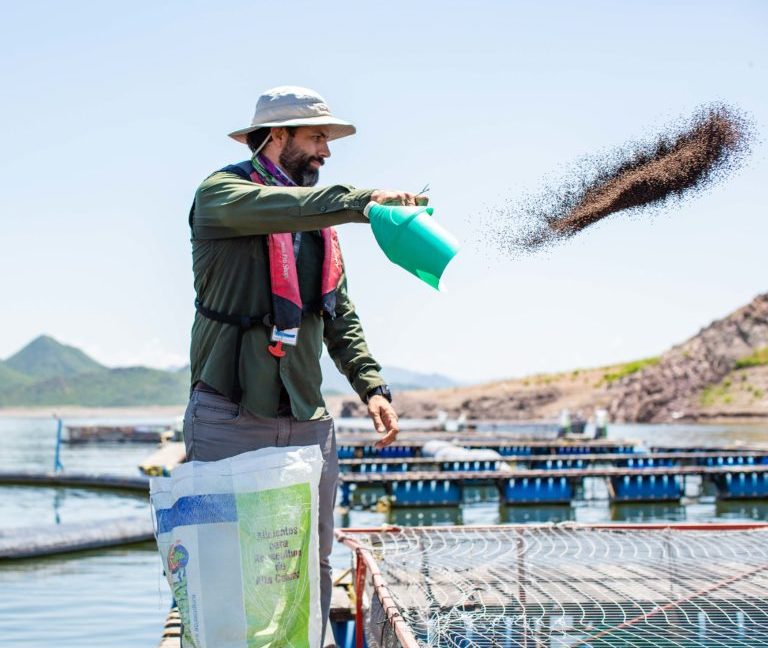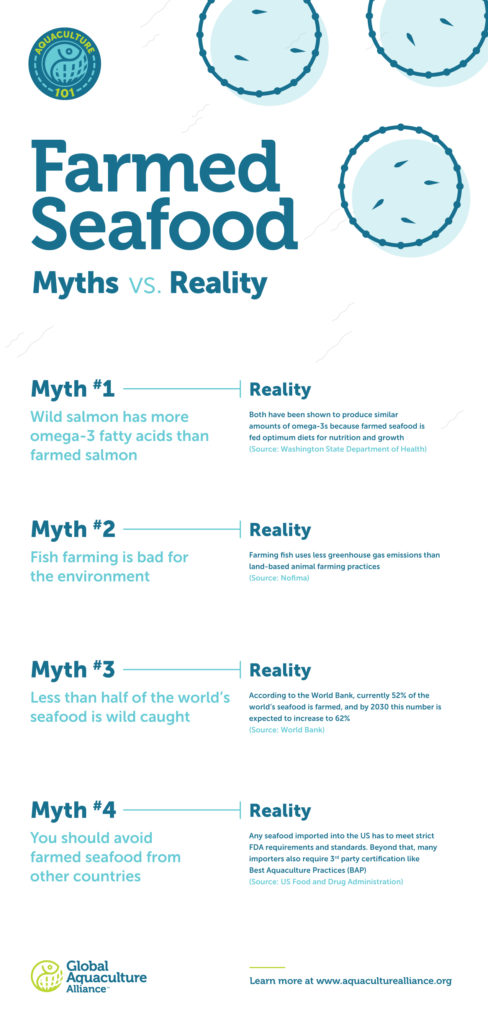Farmed Seafood: Fact vs. Fiction
 Editor’s note: This post is part of the Aquaculture 101 series, an educational campaign GSA is carrying out in 2019. The mission of the campaign is to spread awareness about basic aquaculture information to those who might not know about aquaculture, or those who might be skeptical of farmed fish. Each month, a blog post, short video and infographic are released on the GSA website and shared across social media with the hashtag #Aquaculture101.
Editor’s note: This post is part of the Aquaculture 101 series, an educational campaign GSA is carrying out in 2019. The mission of the campaign is to spread awareness about basic aquaculture information to those who might not know about aquaculture, or those who might be skeptical of farmed fish. Each month, a blog post, short video and infographic are released on the GSA website and shared across social media with the hashtag #Aquaculture101.
Given that farmed seafood has had public issues with regards to the environment and food safety in the past, misinformation and misconceptions have run rampant among consumers, resulting in the creation of confusion and a lack in confidence in buying and eating seafood. As a part of GSA’s Aquaculture 101 series, one topic that could not be ignored is the subject of aquaculture facts vs. fiction.
 To clarify some of the most common myths and misconceptions about aquaculture, GSA has compiled a list of widespread fictions about farmed seafood. Much progress towards sustainability has been made throughout the industry over the past few decades, however, as with every industry, there is room for improvement. GSA has created these resources as a means for consumers to feel more educated about their seafood choices, and to help push the industry in the right direction.
To clarify some of the most common myths and misconceptions about aquaculture, GSA has compiled a list of widespread fictions about farmed seafood. Much progress towards sustainability has been made throughout the industry over the past few decades, however, as with every industry, there is room for improvement. GSA has created these resources as a means for consumers to feel more educated about their seafood choices, and to help push the industry in the right direction.
In a recent Aquaculture 101 video, GSA’s Education team headed to Portsmouth, NH, a seafood hub on the coast of New Hampshire, USA, to talk with the locals and see how many people know the answers to four true/false statements about seafood. See how well they did in the video below!
Myth: Wild salmon has more omega-3 fatty acids than farmed salmon.
Reality: both have been shown to produce similar amounts of omega-3s. Farmed seafood are fed optimum diets for nutrition and growth (Source: Washington State Department of Health).
Myth: Fish farming is bad for the environment.
Reality: farming fish creates significantly less greenhouse gas emissions than land-based animal farming practices (Source: Nofima).
Myth: Less than half of the world’s seafood is wild caught.
Reality: according to the World Bank, currently 52% of the world’s seafood is farmed, and by 2030 this number is expected to increase to 62% (Source: World Bank).
Myth: You should avoid farmed seafood from other countries.
Reality: any seafood imported into the US has to meet strict FDA requirements and standards. Beyond that, many importers also require 3rdparty certification like Best Aquaculture Practices (BAP) (Source: US Food and Drug Administration).
Myth: Only a few fish species come from aquaculture.
Reality: over 200 species of aquatic animals are currently farmed, including species ranging from finfish, to mollusks, to crustaceans. Salmon, shrimp, and mussels are among the most widely produced farmed seafood.
Myth: Farmed seafood is bad because it uses other fish as feed, which is wasteful.
Reality: fishmeal and fish oil are widely used in feed for seafood. Aquaculture is actually much more efficient with feed than land-based animal farming. For cows, it takes about 4-10 pounds of feed to produce one pound of body mass (4-10:1), where pigs take about 3 pounds of feed to produce one pound of body mass (3:1), and chicken take about 2 pounds of feed to produce one pound of body mass (2:1). Farmed seafood has the lowest feed conversion ratio: it takes about 1.1 pounds of feed to create one pound of body mass (1.1:1) (Source: Nofima).
Myth: Farmed seafood is full of antibiotics.
Reality: Naturally, if animals contract diseases, producers want to mitigate it as efficiently as possible. In some cases, the most humane way to do so is with antibiotics. The judicious use of antibiotics is the best route for certain cases. It can be what is best for the animal on their road to recovery. Judicious use of antibiotics, best management practices, and regulations include a withdrawal period in which the fish cannot be harvested while the medicine is still in their system. Withdrawal periods are set by governing agencies such as the US Food and Drug Administration (FDA).
Learn more in our “Farmed Seafood: Fact vs. Fiction” video.
Read more of our Aquaculture 101 series and check it out on social media with the hashtag #Aquaculture101!




